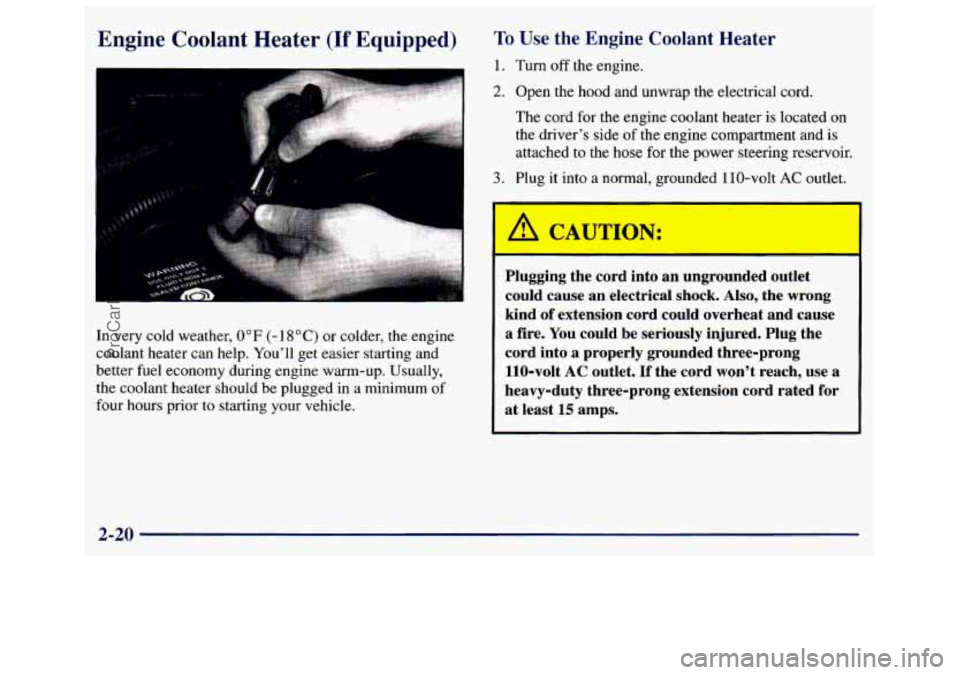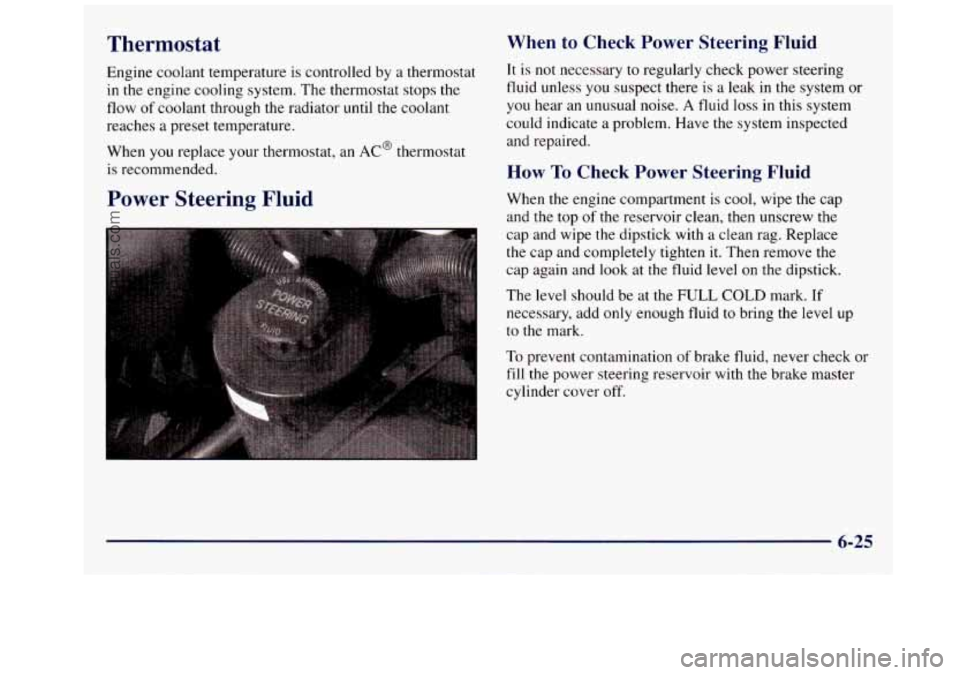Page 92 of 388

Engine Coolant Heater (If Equipped) To Use the Engine Coolant Heater
1. Turn off the engine.
2. Open the hood and unwrap the electrical cord.
The cord for the engine coolant heater is located on
the driver's side
of the engine compartment and is
attached to the hose for the power steering reservoir.
I
I
3. Plug it into a normal, grounded 110-volt AC outlet.
In very cold weather,
0°F (- 18 O C) or colder, the engine
coolant heater can help. You'll get easier starting and
better fuel economy during engine warm-up. Usually,
the coolant heater should be plugged in
a minimum of
four hours prior to starting your vehicle.
Plugging the cord into an ungrounded outlet
could cause an electrical shock.
Also, the wrong
kind
of extension cord could overheat and cause
a fire. You could be seriously injured. Plug the
cord into
a properly grounded three-prong
110-volt
AC outlet. If the cord won't reach, use a
heavy-duty three-prong extension cord rated
for
at least 15 amps.
2-20
ProCarManuals.com
Page 250 of 388
When you lift the hood, you’ll see these items:
A
A. Battery
B. Coolant Recovery I ank
C. Engine Oil Dipstick D.
Engine Oil Fill
E. Transmission Dipstick
E Air Cleaner
G. Power Steering Reservoir
H. Brake Master Cylinder
I. Windshield Washer Fluid
6-10
ProCarManuals.com
Page 265 of 388

Thermostat
Engine coolant temperature is controlled by a thermostat
in the engine cooling system. The thermostat stops the
flow
of coolant through the radiator until the coolant
reaches
a preset temperature.
When
you replace your thermostat, an AC@ thermostat
is recommended.
Power Steering Fluid
When to Check Power Steering Fluid
It is not necessary to regularly check power steering
fluid unless you suspect there
is a leak in the system or
you hear an unusual noise. A fluid loss in this system
could indicate
a problem. Have the system inspected
and repaired.
How To Check Power Steering Fluid
When the engine compartment is cool, wipe the cap
and the top
of the reservoir clean, then unscrew the
cap and wipe the dipstick with a clean rag. Replace
the cap and completely tighten it. Then remove the
cap again and look at the fluid level on the dipstick.
The level should be at the
FULL COLD mark. If
necessary, add only enough fluid to bring the level up
to the mark.
To prevent contamination of brake fluid, never check or
fill the power steering reservoir with the brake master
cylinder cover
off.
6-25
ProCarManuals.com
Page 267 of 388
NOTICE:
0
0
0
0
When using concentrated washer fluid,
follow the manufacturer’s instructions for
adding water.
Don’t
mix water with ready-to-use washer
fluid. Water can cause the solution to freeze
and damage your washer fluid tank and
other parts of the washer system. Also,
water doesn’t clean as well
as washer fluid.
Fill your washer fluid tank only
three-quarters full when it’s very cold.
This allows for expansion if freezing occurs,
which could damage the tank
if it is
completely full.
Don’t use engine coolant (antifreeze) in
your windshield washer.
It can damage
your washer system and paint.
Brakes
Brake Fluid
Your brake master cylinder reservoir is here. It is filled
with DOT-3 brake fluid.
6-27
ProCarManuals.com